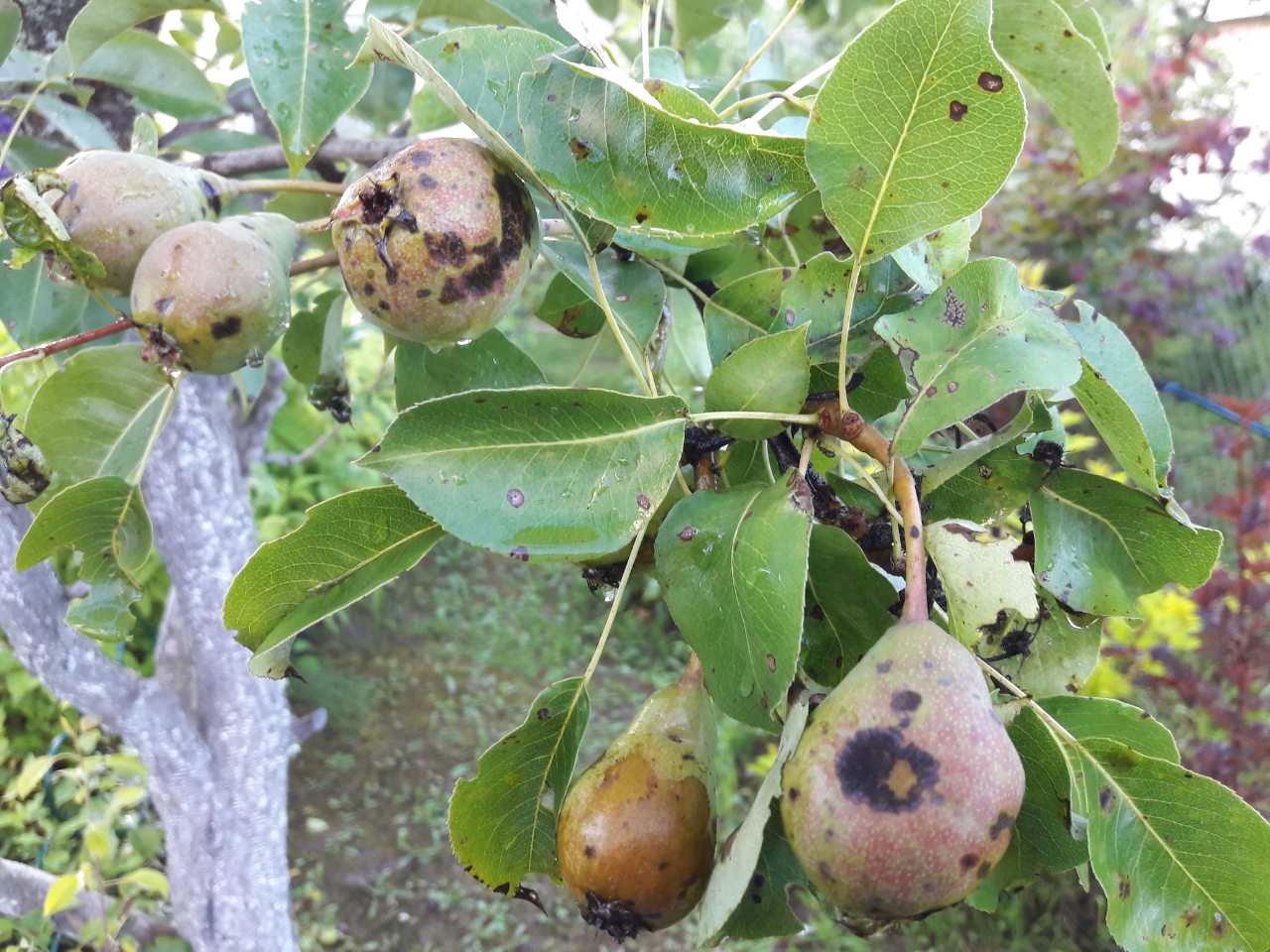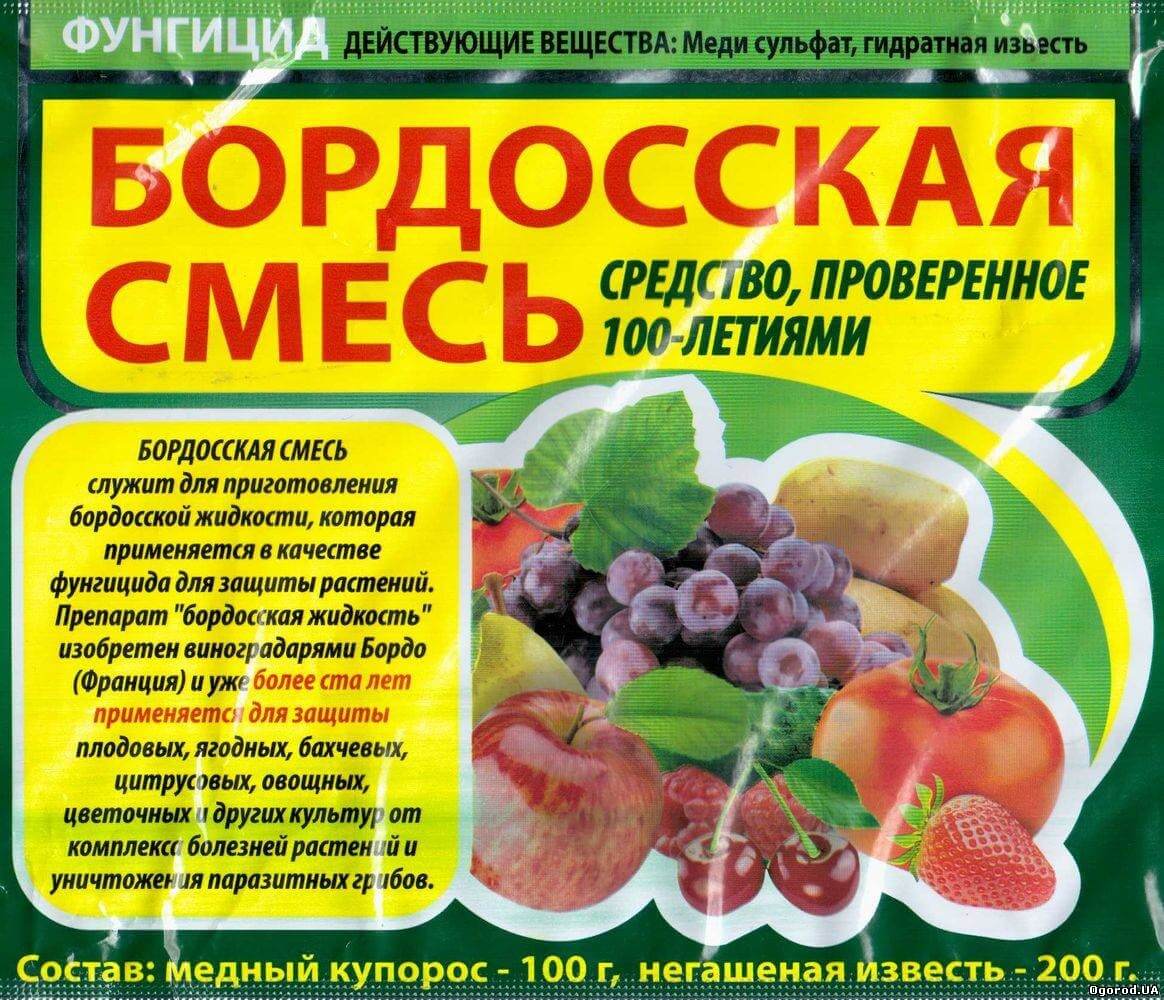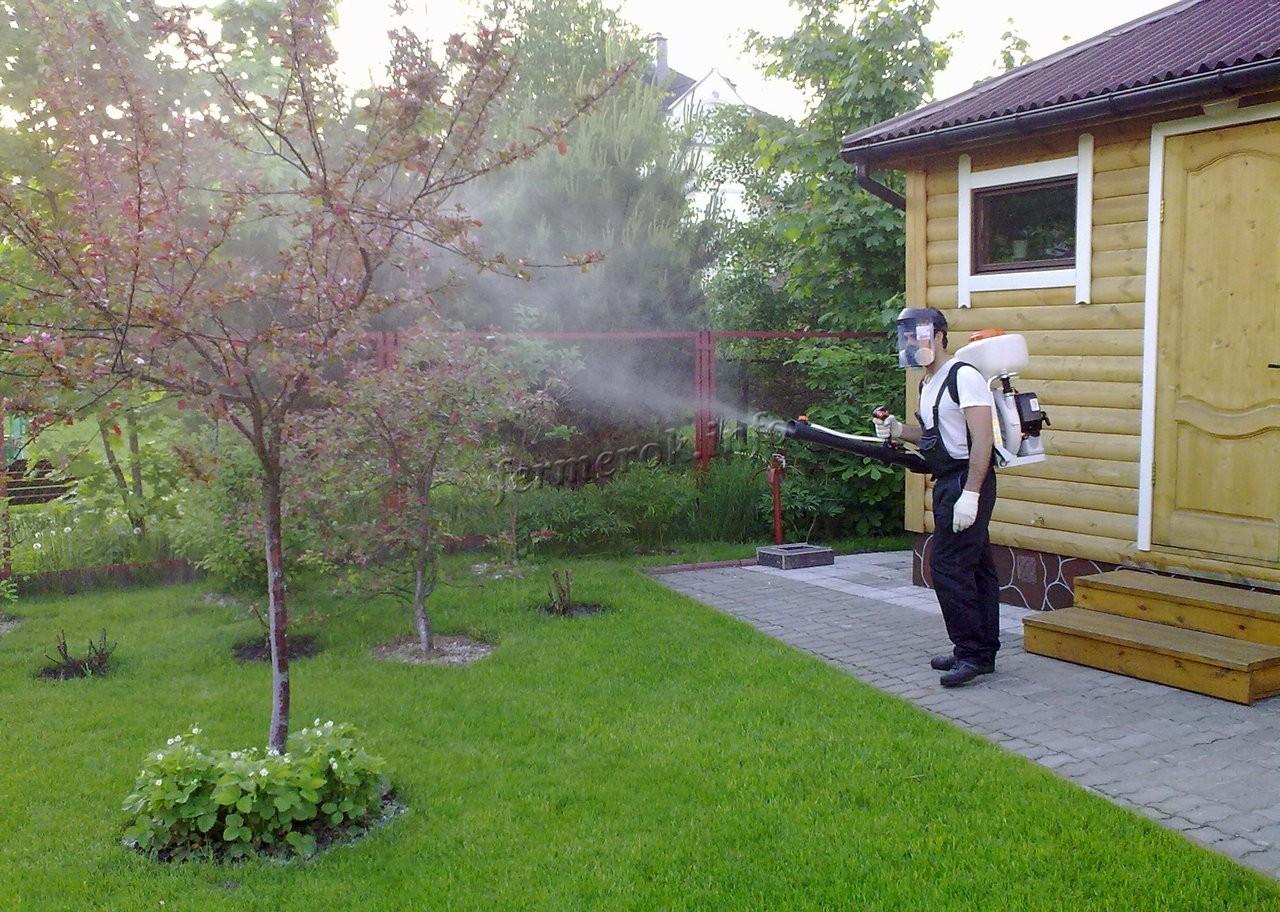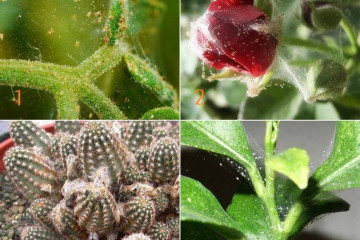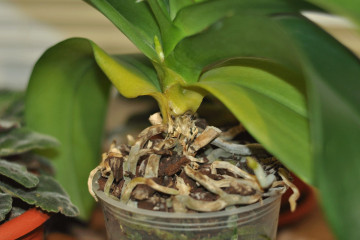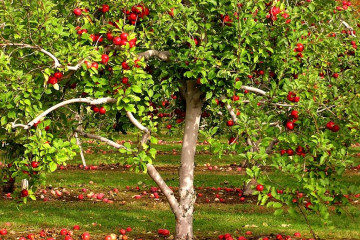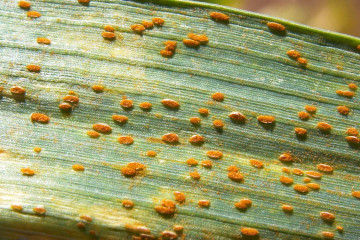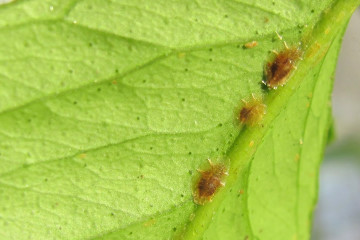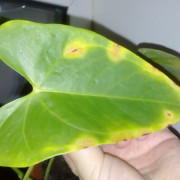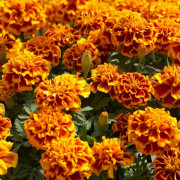Scab on a pear - a description of the disease and how to deal with it
Content:
The scab on the pear causes serious damage to the tree, can lead to the loss of not only the commercial qualities of the fruit, but also the entire crop. Most often, the disease manifests itself in regions with a temperate climate. So that all the gardener's efforts are not in vain, it is necessary to carry out treatment in a timely manner and adhere to certain preventive measures. Only comprehensive measures help to get rid of the problem and preserve the quality of the crop.
The causative agent of pear scab
This disease is classified as fungal. Scab appears on pear leaves, as well as shoots and fruits. Its causative agent is the mushroom Venturia pirina Aderh.
In the presence of favorable conditions for its life and reproduction, it can affect up to 100% of the crop. Therefore, it is necessary to carry out treatment and prevention in a timely manner, otherwise all the efforts of the gardener may be wasted.
The causative agent of scab on a pear goes through 2 stages of development.
- The first is the marsupial, in which it stays throughout the entire cold period of the year. In this case, the pathogenic fungus remains on fallen leaves, as well as in the tissues of the bark of infected shoots.
- The second is conidial, this stage of development begins with the arrival of spring, and it is in this stage that the fungus is active and quickly spreads to all parts of the tree.
The pathogen multiplies by spores. For their successful development, a temperature above +7 degrees and high air humidity are required. During the entire growing season of pears, sporulation can occur up to 10 times.
Provoking factors for the spread of scab:
- high humidity of air and soil;
- thickening of landings;
- monotony of cultures in the garden;
- increased susceptibility of the variety.
Signs
The first signs of scab on a pear appear in the spring when the foliage is blooming. Rounded brown spots appear on the plates. Over time, they noticeably increase in size, darken. In the absence of control measures at this stage, the disease spreads to flowers. Affected buds do not form an ovary and crumble.
Subsequently, the scab passes to pear fruits. In this case, similar dark spots appear on their surface, which can look like warts. In the future, they merge into a single whole and form whole necrotic areas.
The scab causes the fruit to grow small, irregular, and cracked.
Pear treatment for scab
When the first signs of the disease appear, it is necessary to begin to fight it. It is quite possible to restore the health of the tree if you use complex methods of treatment and prevention. This guarantees the protection of future crops and the preservation of the immunity of the crop.
You need to deal with scab using different means. Each of them has certain application features, which you must familiarize yourself with in advance.
Bordeaux mixture
This preparation contains copper sulfate, which has a detrimental effect on the scab pathogen. It also contains quicklime, which enhances the fungicidal effect. To process pears, you must first prepare a special solution.
Each component of the product must be diluted in a separate enamel or plastic container.
The procedure for preparing the working solution:
- Copper sulfate pour 5 liters of hot water, mix.
- Dissolve quicklime in the same volume of cold water.
- Pour the mixture of copper sulfate into the lime solution in a thin stream, stirring constantly.
Before processing, it is necessary to check the reaction of the prepared product. To do this, you need to lower an iron nail into it. If a red bloom appears on it, then this indicates a high concentration of copper. It is impossible to spray with such a solution, as it can cause burns to leaves and young shoots. In this case, add water.
Throughout the growing season of a pear, Bordeaux mixture can be used no more than 5 times. Moreover, the concentration of the working solution should vary, depending on the stage of pear development. To prepare 1% of the mixture, it is necessary to take 100 g of copper sulfate and quicklime per bucket of water, and 3% - 300 g each.
Chemicals
You can also treat a pear for scab with special chemicals. They have a systemic effect that guarantees long-term protection.
Effective drugs:
- "Raek". The active ingredient of the drug is difenoconazole. It penetrates into all parts of the tree and provides protection outside and inside. The fungicidal effect lasts 20 days. To prepare the solution, dilute 1.2 ml of the drug in 10 liters of water. No more than 4 treatments are allowed per season.
- Horus. This drug is effective at temperatures ranging from + 3 ... + 10 degrees. The active ingredient is cyprodinil. To prepare the working fluid, dissolve 3 g of the product in 10 liters of water. The protective effect lasts for 4 weeks.
- "Speed". The active ingredient of the drug is difenoconazole. To prepare the solution, it is necessary to dissolve 1.6 ml of the product in 8 liters of water. The fungicidal effect appears 3 hours after treatment and lasts for 3 weeks. During the season, "Fast" can be sprayed on a pear no more than 2 times.
Folk remedies
This method of treatment can be used with minor damage to the tree, as well as as part of a comprehensive treatment. With the massive spread of scab in the garden, folk remedies are not able to solve the problem.
Effective options:
- Mustard powder. For processing, you need to dissolve 8 g of the component in a bucket of warm water.
- Potassium permanganate. The processing of the crown and root circle should be carried out with a saturated bright pink solution.
- Field horsetail. Fill 1/3 of the bucket with the plant. Fill to the top with water. Insist the solution for 10 days, peel and spray the leaves.
Mineral fertilizers
This method not only helps to get rid of the scab, but is also an additional foliar feeding.
For treatment, it is necessary to apply fertilizers in the following concentration:
- ammonium nitrate (10%);
- ammonium sulfate (10%);
- potassium chloride (3-10%);
- potassium sulfide (3-10%);
- potassium salt (10-15%).
Terms and rules of processing
To get rid of the scab on the pear, you need to know when to carry out the treatments, as well as what drugs can be used, depending on the stage of development of the tree. Compliance with all recommendations will help not only stop the sporulation process of the fungus, but also save the harvest.
Processing before flowering
The first spraying of a pear for scab should be done in early spring during the swelling of the buds, which usually occurs in mid-April. During this period, it is recommended to use Bordeaux mixture (3%) or "Horus". You need to process the trunk circle, trunk and skeletal branches, as well as pear shoots.
During flowering
The second treatment is recommended at the stage of bud extension, which usually occurs in the first half of May. At this time, professional systemic fungicides should be used. The working solution should be sprayed onto the crown of the tree.
Post-flowering treatment
The third time the scab treatment should be done at the end of flowering. This period falls on the beginning of June. At this stage, you can apply chemicals and Bordeaux mixture at a concentration of 1%. You need to spray pear leaves and shoots.
How to process a pear with fruits
How to treat a pear in July and August for scab? In the second half of summer, fruits are already forming on the tree. Therefore, it is not recommended to use long-acting chemical preparations at this time.
During this period, preference should be given to folk remedies. And in the case of a massive spread of the disease, it can be treated with Bordeaux mixture (1%) with a waiting period until harvest of 2 weeks.
Disease prevention
You can prevent scab damage to pears if you follow simple preventive measures. They cannot completely eliminate the likelihood of developing the disease, but they are able to minimize the risks.
Preventive measures:
- Plant trees in sunny, open areas.
- Avoid thickening of the landings.
- After fruiting, promptly remove fallen rotting fruits.
- It is necessary to treat wounds and cracks in the bark in a timely manner with garden pitch.
- Whitewash the trunk and skeletal branches.
- In late autumn, collect and burn all fallen leaves.
Resistant varieties of pears to scab
To reduce the likelihood of developing scab in the garden, you can choose pear varieties that are not very susceptible to this fungus.
These include:
- Nerussa;
- Annushka;
- Oryol beauty;
- Belarusian late;
- January;
- Rusanovskaya;
- Yeseninskaya.
Tips and tricks from experienced gardeners
The scab is able to discourage any desire to grow a pear in a personal plot. But with proper treatment and prevention, you can quickly get rid of the disease.
Experienced gardeners recommendations:
- Spray the crown of the tree abundantly and evenly.
- Carry out processing in the morning or evening in calm weather.
- The greatest effect of treatment is achieved after rain, when the fungus is actively multiplying.
- Processing should be combined with the simultaneous removal of affected fruits, leaves, shoots.
Scab is a dangerous fungal disease of pears. The disease also affects other fruit trees, as well as plants. But in each case, the pathogens are different. Therefore, the same disease cannot be transmitted between cultures.

